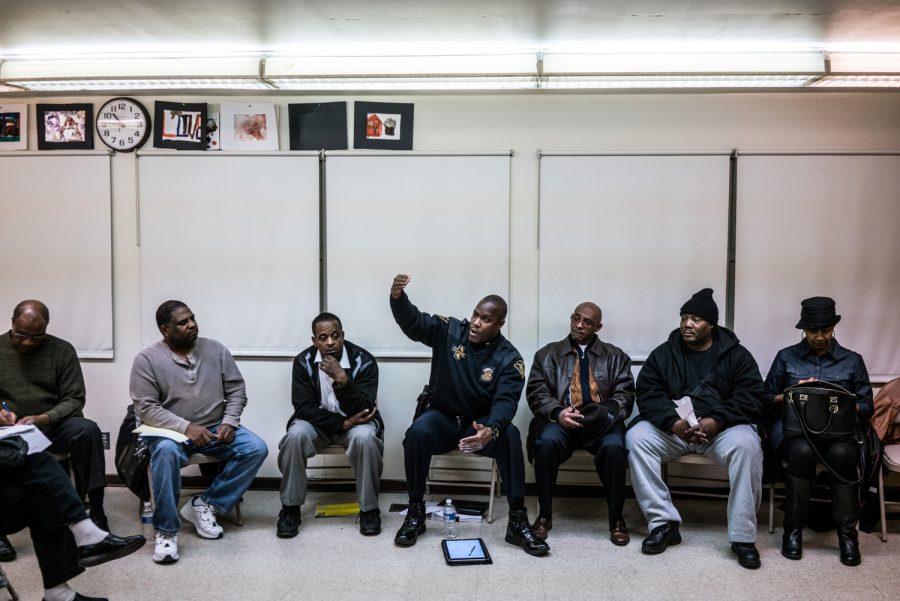How can police heal a community when that community is struggling just to survive?
That’s the question at the center of “Flint Town,” Netflix’s newest documentary series. Set in Flint, Michigan, where residents were infamously exposed to lead-polluted water for years without knowing, the show follows a number of police officers through a year of their lives in one of the poorest, most dangerous cities in America. Intense, eye-opening and often beautiful, “Flint Town” doesn’t just grapple with what it means to be a cop, but what it means to be a member of a community.
When we’re introduced to the members of the Flint Police Department, it quickly becomes apparent they’re underfunded, understaffed, overworked and ill-equipped for their job. The 98 officers serving Flint’s population of 100,000 are spread thin, taking dangerous calls alone, driving around in squeaky-wheeled patrol cars and arriving on crime scenes as late as an hour after 911 calls. It’s pandemonium for every officer on-screen, from recruits fresh out of training all the way up to the police chief.
The show’s eight, 45-minute episodes unfold between late 2015 and early 2017, a tumultuous time for the city of Flint. As the first episode ends, the standing police chief in Flint is abruptly fired and replaced by Tim Johnson, a hard-nosed cop who wants to take a proactive approach to reducing crime in the city. This change serves as a catalyst for the show’s narrative, as the decisions Johnson makes play out in ways that affect his officers and the city at large, for better and for worse.
Done a different way, a series about Flint could easily feel redundant. “Flint Town” succeeds, though, because it strives to understand the people of Flint, not just their predicaments. Rather than retread every detail of the water crisis, “Flint Town” lets it loom in the background, haunting the people of Flint with every case of water bottles that’s shipped around in lieu of clean, drinkable water. The 2016 presidential election takes a backseat to local and state politics in the show’s narrative, and it’s only truly involved in the stellar seventh episode of the season, “Two Worlds,” because it highlights the differences white and minority police feel between each other.
The show captures Flint with stark and memorable cinematography. Images of snow flurries bathed in red and blue police lights and lonely officers staring up at Fourth of July fireworks will stick with viewers after the show ends. The camera always seems perfectly placed to establish dynamics between characters, even in the most hectic, run-and-gun situations.
Flint’s problems are messy, but the show handles them masterfully by focusing first and foremost on the people of Flint. Interviews with the police and community members make up the backbone of the show, emphasizing the fears and desires that drive everyone to believe what they do. No one in the town wants the crime or the drugs, and no one wants to distrust police. At the end of the day, though, everyone has their own perspective, and the filmmakers make a commendable effort to meet their subjects where they are. As a result, a watch through “Flint Town” becomes an exercise in empathy.
Few things are more clichéd than calling a piece of media “important” in 2018, but “Flint Town” deserves that title. We need shows that deal honestly and three-dimensionally with issues like policing, racism and politics now more than ever. “Flint Town,” with its fundamentally human position, offers a glimpse at the type of understanding needed to get Americans through such polarizing times.
“Flint Town”
Episodes: 8
Rating: TV-MA
Score: 5/5 stars


















